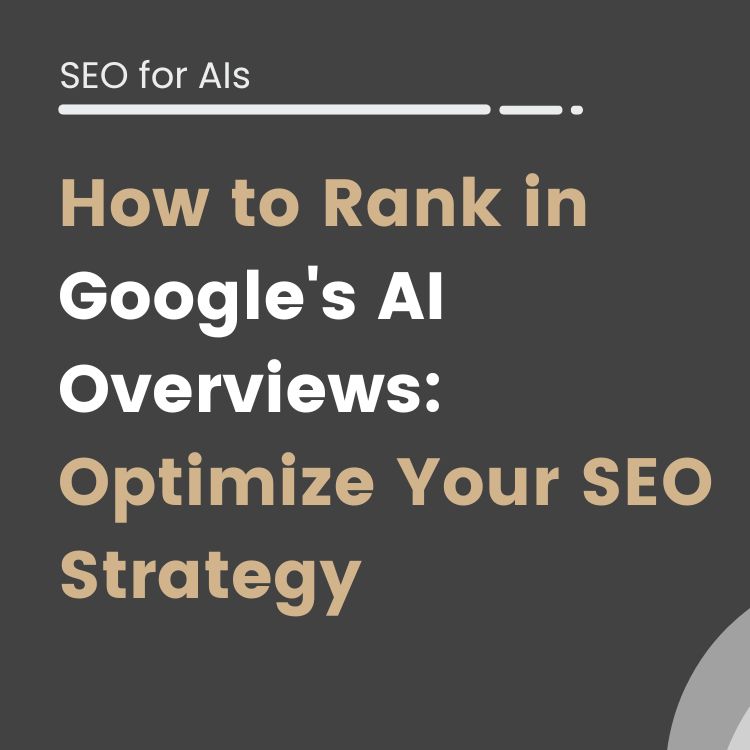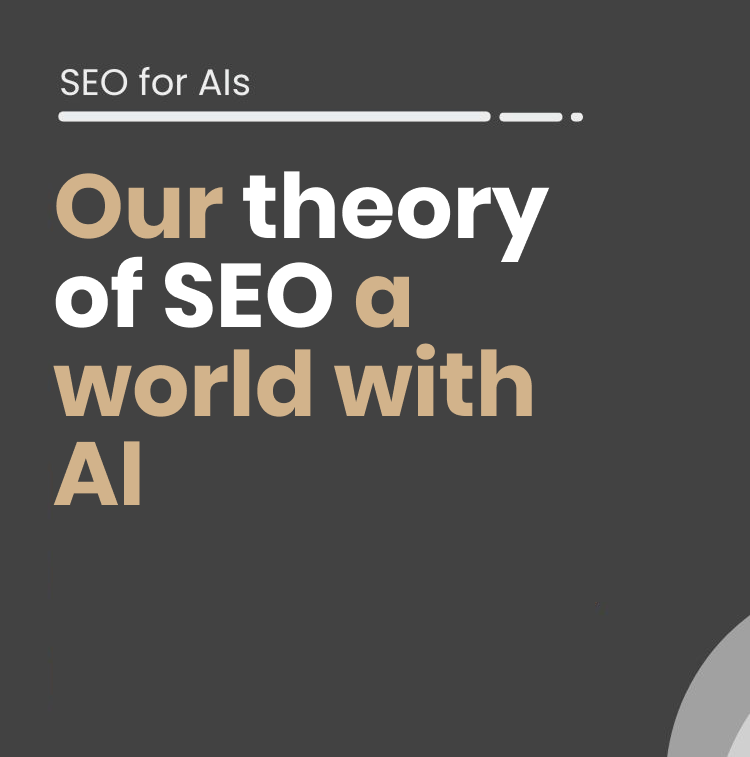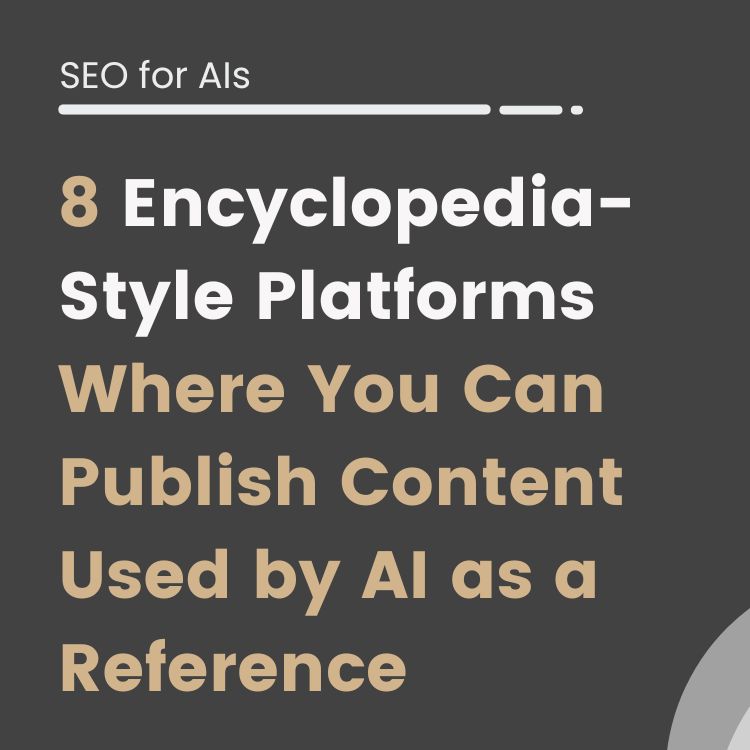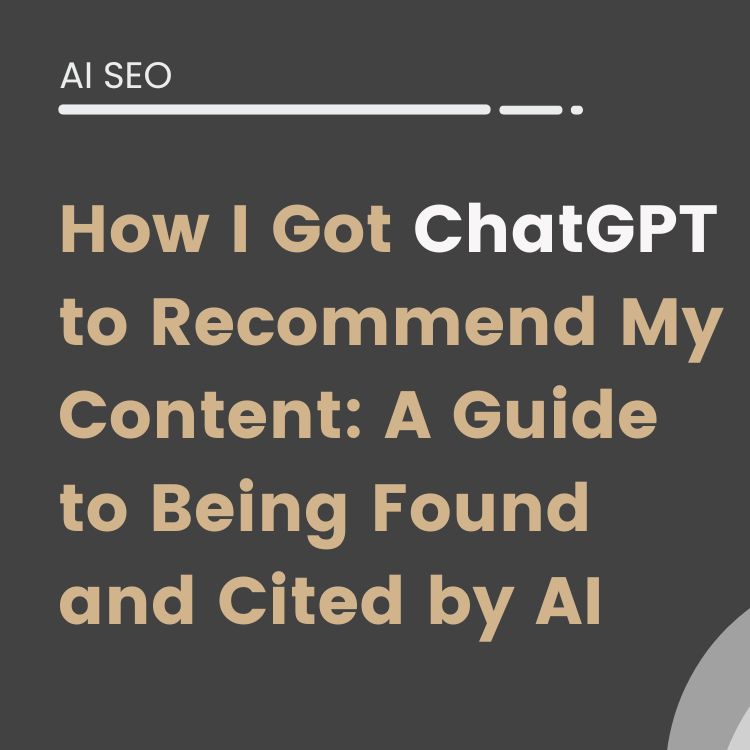From driverless cars to voice assistants, artificial intelligence is fast becoming part of our everyday lives. But how safe are AI copywriting tools to write texts? Can it be used to generate content without Google detecting it and penalizing you for it?
In this post we will explore this topic in detail.
We will analyze these tools and discuss whether or not AI content writing is a viable option for marketers and how far you can go with it.
Shall we get started?
What is Google’s official stance on AI-generated content?
The use of artificial intelligence to generate content has a high potential to clash with Google’s current and future webmaster guidelines.
On several occasions John Muller has been asked about this on twitter:

This is the literal transcription of John’s tweet:
And he has also insisted on this idea in live broadcasts on the official Google Search central youtube channel:

The Google executive has been quite categorical in his statements on the use of AI or other tools to generate automatic content.
In fact, Muller clarifies that for Google the use of these writing tools is considered spam regardless of the model or the way they are used.
He adds:
In other words, regardless of the tools used to create it, content written by machines is considered SPAM and Google can act against it.
And AI falls into this category. So says John:
And resumes:
Another very different thing is that Google today is able to detect it.
Or that these tools are used in such a way that they serve to expand the capabilities and productivity of your content team.
In any case, Google’s inflexible stance seems to be changing or entering a more grey area.
Here’s what Google’s pre-June 2022 guidelines said on the subject:

It explicitly mentions the Markov chains used for automated text generation.
Let us now look at the relationship between Markov chains and AI:

It seems obvious that Markov chains are employed by AI tools and therefore go against Google’s guidelines.
But what do these same Google policies say in October 2022?
Let’s see:

Although less clear in this respect, it is true that mention of the “Markov Chains” used by some AIs has been removed and the emphasis has been placed on the quality of content and user experience.
It should be noted that current technologies (BERT, GPT-3, LaMDA…) are not Markovian models and have far superior language modeling and text generation capabilities. Removing the mention of Markov chains may therefore be more of a technical update than an endorsement of AI.
Also, if you notice, they put the focus on “Spammy” where before they talked about automatically generated content in general.
This is very much in line with the Helpful content update to focus on creating content that helps people first.
Does this mean that Google is going to allow automatically generated content?
Absolutely not.
But it is going to focus on content that is generally of quality and helps the user without obsessing so much on how it is being generated.
So:
Before you cancel your subscriptions to AI tools remember that AI can have an important place in content creation.
It’s just a matter of applying it wisely and sparingly.
And in many cases, rather than using it to replace human writers, it is far more productive to see it as a virtual assistant that can help multiply your team’s capabilities.
But… Does the automatically generated content with AI copywriting tools rank?
The short answer is: yes
And as proof, you can see this screenshot of a tweet from Chuiso a very famous Spanish SEO:

Here is the translation for those of you who are not fluent in Spanish:
First AI site to reach 1,000 visits per day. From 0 to 1.000 in 2 months, I have not touched it since day 5 🤣🤣
Today, the use of automated generated content by AI copywriting tools, is indexed and ranked by Google like any other text.
And to a great extent this is because it is indistinguishable to humans or the reader does not care as long as they get the answer to what they are looking for.
In other words, it can be said that AI-made content passes the Turing test.
Look at this example:
Texto 1: Rafael Nadal Parera (born 3 June 1986) is a Spanish professional tennis player. He is currently ranked world No. 2 in singles by the Association of Tennis Professionals (ATP).[He has been ranked world No. 1 for 209 weeks, and has finished as the year-end No. 1 five times. Nadal has won an all-time record 22 Grand Slam men’s singles titles, including a record 14 French Open titles. His 81 consecutive wins on clay is the longest single-surface win streak in the Open Era.
Texto 2: Rafa Nadal Parera is one of the most successful players in the history of tennis. Throughout his career, Nadal has won 22 Grand Slam titles and numerous international titles and achievements. At 36 years of age, he is still ranked number 2 in the world by the ATP and is recognised as one of the best players of all time on clay.
Can you tell us which text has been generated by machine learning?
Neither can we.
You can also have a look at this test launched by Search Engine Journal.
Where they presented a blind test with several texts generated by AI and by humans to check if readers were able to detect the differences.
The result, we tell you, was that they were not distinguishable.
And probably not for Google either.
Although in the near future it will be able to detect it, or maybe not. Who knows!
What we mean is that for all intents and purposes, AI-generated texts are treated by the search engine the same as those generated manually by humans.
So what’s to stop us from replacing editors with machines?
Well, at the moment, a clear limitation of AI copywriting tools is the length of the texts.
Current generative language models (LM) find it difficult to maintain coherence in long texts forms. For long texts, they tend to generate patterns and errors that are easy to detect, both for users and for Google.
But in any case, this does not invalidate them and is a great improvement on what was previously available.
How to use AI effectively in content marketing
Those waiting for AI to solve content generation at scale are going to have to wait and see.
As we have found on iSocialwebAI tools for generating valuable content still have a long way to go.
Especially if you are thinking of using them to generate extensive and in-depth texts such as blog posts, opinion articles or studies.
Replacing your entire team of editors is premature at the moment and we understand that it is counterproductive.
And although media such as La Vanguardia are already taking their first steps with this type of application, for the moment it does not seem that this robot journalist is at the same level as its human colleagues.
However, at present, we believe that applications based on GPT-3 do have a place as a support tool for content creators, especially in repetitive day-to-day tasks.
As many newsrooms have been using these tools as Journalist support to better do theri jobs according to NYTimes.
AI works well for writing short texts such as:
- the meta descriptions of products, articles and other content on your website
- posts on social networks such as twitter
- or responses to customer reviews.
It can even be used to get ideas for improving article titles, brainstorming or creating a quick script for writing an article. In all these cases, AI tools can act as an extension of your creativity and increase the productivity of the content team.
This is where we believe AI tools for copy will be increasingly integrated into marketing, but always with human oversight.
Let’s look at where these applications are most useful and where they are most limited at the moment.
Where AI copywriting tools can be useful for generating text
To be clear, and after all the tests we have carried out on our own websites, we can tell you the following:
AI works unashamedly well for the following scenarios:
- Generating product descriptions at scale.
- Writing cold emails for outreach.
- Writing Meta titles and Meta descriptions at scale.
- Texts for ads on Facebook ads, Google ads and similar platforms.
- Post content to share on social networks.
- Sending out linkedin invitations.
- Generate ideas for blog articles and even the table of contents.
- Write the opening or concluding paragraph of an article.
- Create short texts for the sales and category pages of an ecommerce store.
- Support the productivity of a copywriter.
But as we said, it fails miserably when it comes to creating long-form content or in-depth articles.
In this case, the typical “How to” guides and tutorials or “The best + product name” are difficult to generate with the quality required with these applications.
They simply act as straw content for the content piece.
For these cases, it is best to employ them as a support tool where the writer uses them for repetitive tasks such as generating ideas, grammatical corrections or synthesizing the ideas expressed in a paragraph.
It can even be used to reduce blockages in the creative writing process.
But not to generate quality content from scratch on a specific topic or to create a text on a topic where it has not been written before.
And where AI-generated content surely doesn’t work… at the moment.
Well, the limitations of this type of tool at the moment are clear.
AI to generate content does not give good results for:
- Producing in-depth, well-documented and well-written content on a topic.
- Creating content based on data.
- Generating texts on incipient, innovative or new topics
- Writing opinion articles.
On this point our colleague Luis Fernandez, passionate about AI and Machine Learning points out:
In other words, to create texts, it uses other sources or contents that we provide it with.
Therefore, it is not capable of creating something new or 100% original.
In addition, it fails consistently when:
- There is no clear consensus on a topic.
- There is not enough information available on a topic.
- There is no clear separation between fiction and reality.
Thus, it is not possible to use it for content creation on new topics or where extensive documentation does not exist.
Nor is it able to distinguish between fact and fiction. So it mixes both in its results. Something that can cause more than one problem.
In addition, it is not able to generate content treated with depth and coherence.
So for the moment, forget about the idea of clicking a button and getting a “Complete guide to CRO” or any other similar content.
That It’s not going to happen… anytime soon.
When is AI-generated content potentially harmful?
Just like any human-generated or human-written content, AI-generated content is counterproductive when it does not respond well to a user’s search intent and is only intended to rank well in search engines.
Google is very clear about this in all its webmaster guidelines.
There is already enough low quality content generated manually, so adding automated content of the same or worse quality will only make things worse.
Let’s look at an example of the latter:

As you can see in the image, the combination of the Helpful content update and Google’s latest spam update aims to act against the inflation of automatically generated content.
And therefore “punish” content creators who generate content that has no value, is partially copied or does not bring anything new to the user.
This is where we as digital marketers have to put ourselves in Google’s shoes.
Think that it is vital for the search engine to offer users the best information available for their questions.
And it will always be on the lookout to remove low-quality content from its results.
However, it is very likely that websites created 100% with automatic content will work well for a long time.
In fact, Google often swallows this type of content in a gross way.
However, we know that this is not a sustainable bet over time.
Especially for big brands and companies.
Google works a bit like the IRS. It has its inspectors and machine learning equipment to detect websites suspected of spamming and its ways of filtering and detecting them.
Think for a moment about the analogy we make with the tax authorities.
Who do you think the tax authorities will pay more attention to? Bizum payments of €15 between individuals or transfers of more than €10,000.
Of course, it costs the Treasury the same to go after both users, but for the latter, faced with the same offense, it is more profitable to take action than the former.
Something similar happens with Google.
A relatively small website with 500 urls that attracts 100,000 searches per month with automated or spinnaker-generated content is more likely to fall under the search engine’s radar than a website with 100 times more traffic and URLs.
Here, the chances of Google deciding to act are multiplied exponentially.
Sooner or later, such traffic volumes will attract the attention of the search engine, which will scrutinize the site more carefully for non-compliance and if it is able to detect it, it will simply stop displaying that content.
Of course, you can mask all this and get into the cat and mouse game but recent changes (YMYL, E-A-T and HCU) make it increasingly difficult to work around these filters.
So, Does this mean that you as a CMO or business owner can’t use these tools?
Not at all.
What it does mean is that you should always put the user first and make sure that in the long run, even automated generated content helps them find what they want. And today this is only possible with human intervention.
What can we expect from AI-generated content in content marketing?
You can be sure that AI content creation is going to skyrocket.
Some research suggests that 65% of UK agencies are already using these tools to write copy and content pieces.
Specifically:
This chart shows how various UK agencies are using these tools.

Without being unconditional advocates of writing using Artificial Intelligence in the face of the data, we do believe that they have their place and usefulness.
And that their use will become more widespread, but always under human supervision.
Therefore, we believe that brands should continue to rely on dedicated copywriters to create content that is optimized for search engine users. This is the only way to ensure that your website and its content will be visible in the SERPs in the long term.
Undoubtedly, leveraging the use of AI to be much more productive in content marketing can be a good idea as we have seen.
It is a matter of finding the balance between the two worlds and employing them where their use is most satisfactory without overusing them.
Being aware of their limitations when it comes to generating useful and informative content.
In any case, our recommendation is that if you are going to make intensive use of automatic content generation, you should do so knowing the risks and how it can affect your business.
And we strongly advise that you carry out a manual content curation process to avoid problems.
Bottom line: Will AI take over content creation?
The thing to bear in mind with AI content generation is that this tool is only as good as the person who operates it.
There is no such thing as an autopilot that will get everything right the first time we push the button.
They are excellent applications for productivity and for speeding up the production of certain content. But you need someone who knows a subject well and knows how to present the information in a way that is attractive to users and search engines.
For the time being, an SEO copywriter can take advantage of AI as a tool to speed up repetitive tasks in his or her production.
But not to generate texts from scratch without human intervention.
All these applications require a context to be provided by a human and their results to be supervised.
Something that forces the writer to work well on the prompts or inputs sent to the AI, to carry out the previous research work well and to work on the content afterwards.
For this reason, if you are looking for professional advice to speed up the creation of professional content for your website, you can.
contact us here.
Who will be the winner of this game? That remains to be seen.
Frequently asked questions
AI copywriting is the use of artificial intelligence to write copy for your website or marketing campaigns. This can include everything from website copy to your newsletter emails or social media posts.
According to a study published by Matt Bennet in October 2022, 65% of UK agencies were already using AI tools to generate some of their content automatically to some extent to create product descriptions, translate copy or create copy for ads and social media.
AI-based copywriting can be a great tool to help with content generation as long as it is supervised by a copywriter. It is important to keep in mind that AI is still in its infancy and its applications are still being tested.
Although Google neither confirms nor denies that it is capable of detecting AI-generated texts with its algorithms, it has made it clear that for them what is important is that the content published on a website is useful for the user. This is undoubtedly what should occupy all the attention and effort of your content team.
Alvaro Peña de Luna
Co-CEO and Head of SEO at iSocialWeb, an agency specializing in SEO, SEM and CRO that manages more than +350M organic visits per year and with a 100% decentralized infrastructure.
In addition to the company Virality Media, a company with its own projects with more than 150 million active monthly visits spread across different sectors and industries.
Systems Engineer by training and SEO by vocation. Tireless learner, fan of AI and dreamer of prompts.






